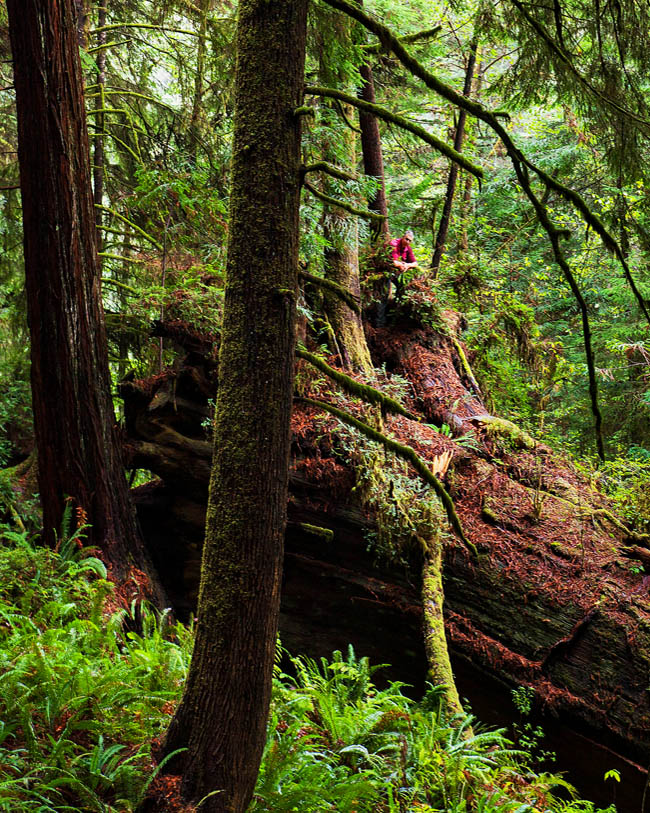The redwood shown below is a fallen titan that was a single trunk about 24 feet diameter. If you look closely, you can see the tiny human speck on top where my red shirt is visible. I chose this photo to help help clarify something about fallen coast redwoods. At least twice this summer, I read the claim that when giant coast redwoods fall, they become home to 100s or 1000s of new species like plants, invertebrates, fungi and other. Both times the Dyerville Giant in Founders Grove was mentioned in the context.
Based on my experience and learning, a little of the opposite may be true. Set aside small redwoods and focus on the oldest ones. Many already have decay near the base and where breakage occurred overhead. Slugs and salamanders already live on them – even other species of trees like hemlock, tan oak or spruce. Have you heard of epiphytes? Those include small trees and other plants that grow on branches or trunks overhead. Even Big Tree in Prairie Creek had huckleberry near its top. Ferns are obvious too, sometimes growing on burls. Much of what lives on a fallen redwood was already present while it stood alive. The small populations simply redistribute, spread or change. But fallen giants can lose species. You won’t really find owls and marbled murrelets nesting on fallen logs. Nor Methuselah’s beard lichen — and rarely Lobaria lichen. Whatever species favored the upper canopy of a living ancient redwood, tend to wither and perish after it falls. So when you explore the redwoods, realize that standing giants can store as many kinds of species as fallen logs, and maybe a few more.
In addition to ferns and other stuff, the log below has several hemlocks growing on it’s base. The same hemlock species sometimes grow as an epiphyte. The age, form and size of other plant life on this log has me guesstimating it fell about 100 to 200 years ago.


Recent Comments